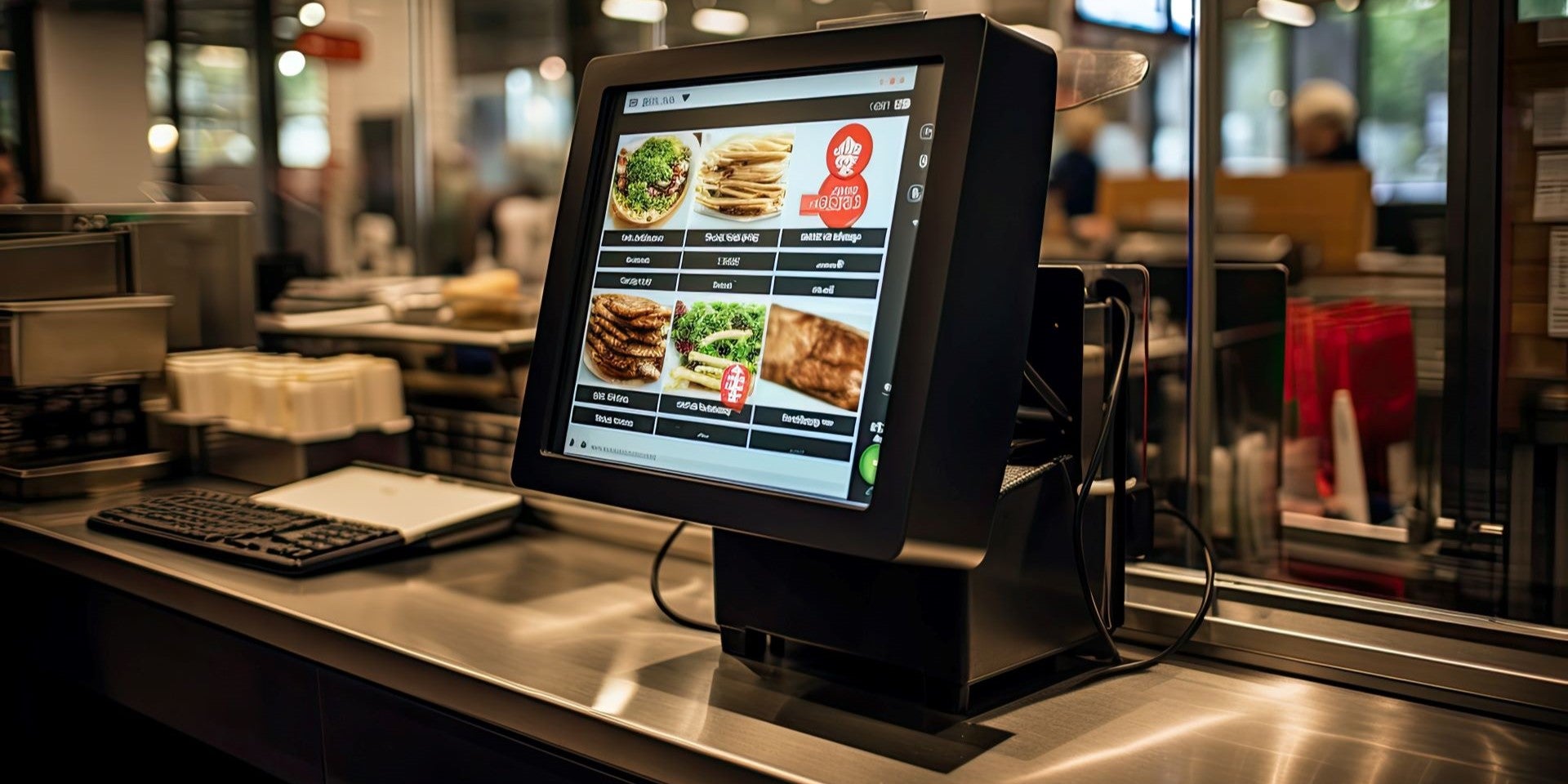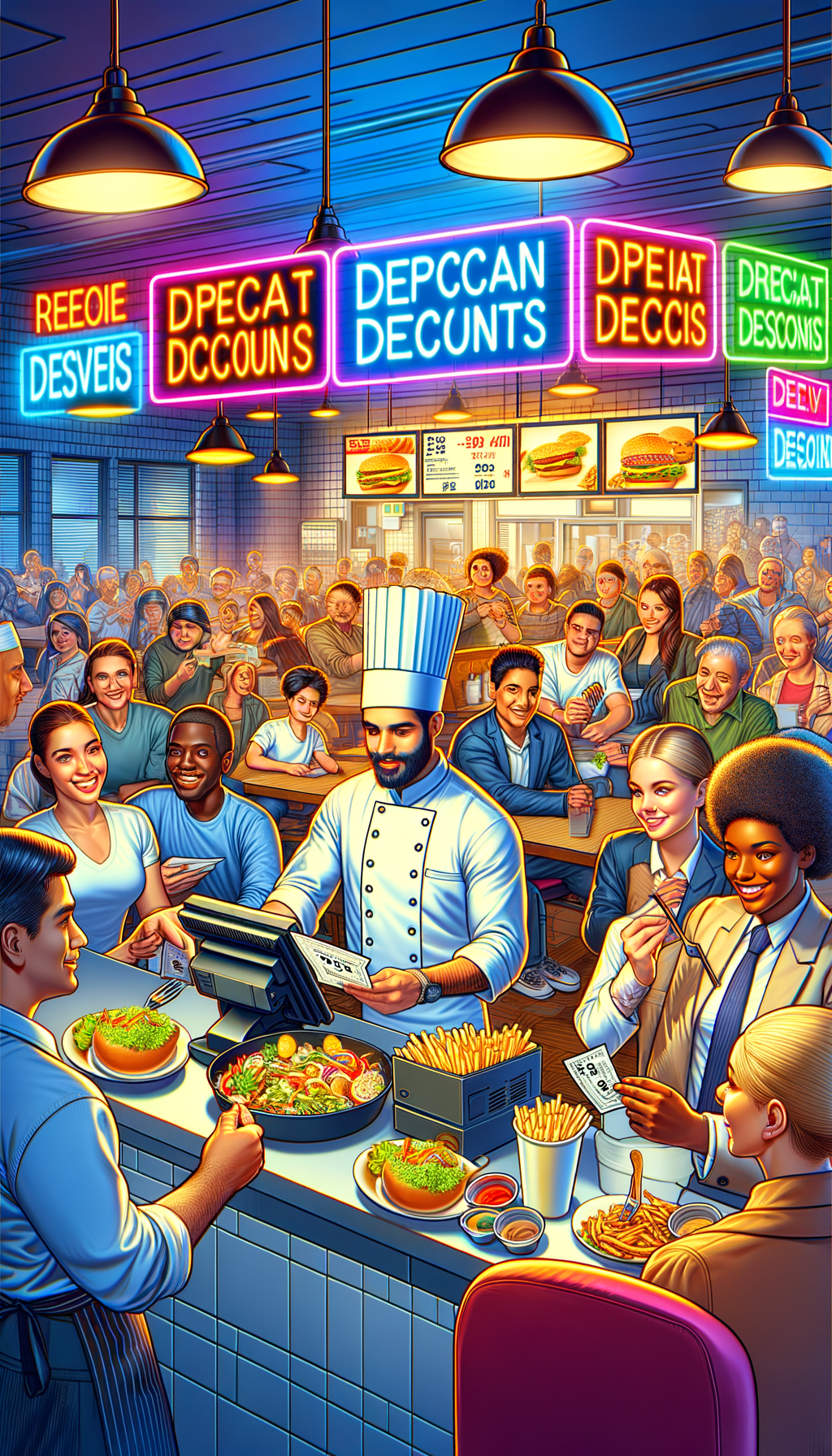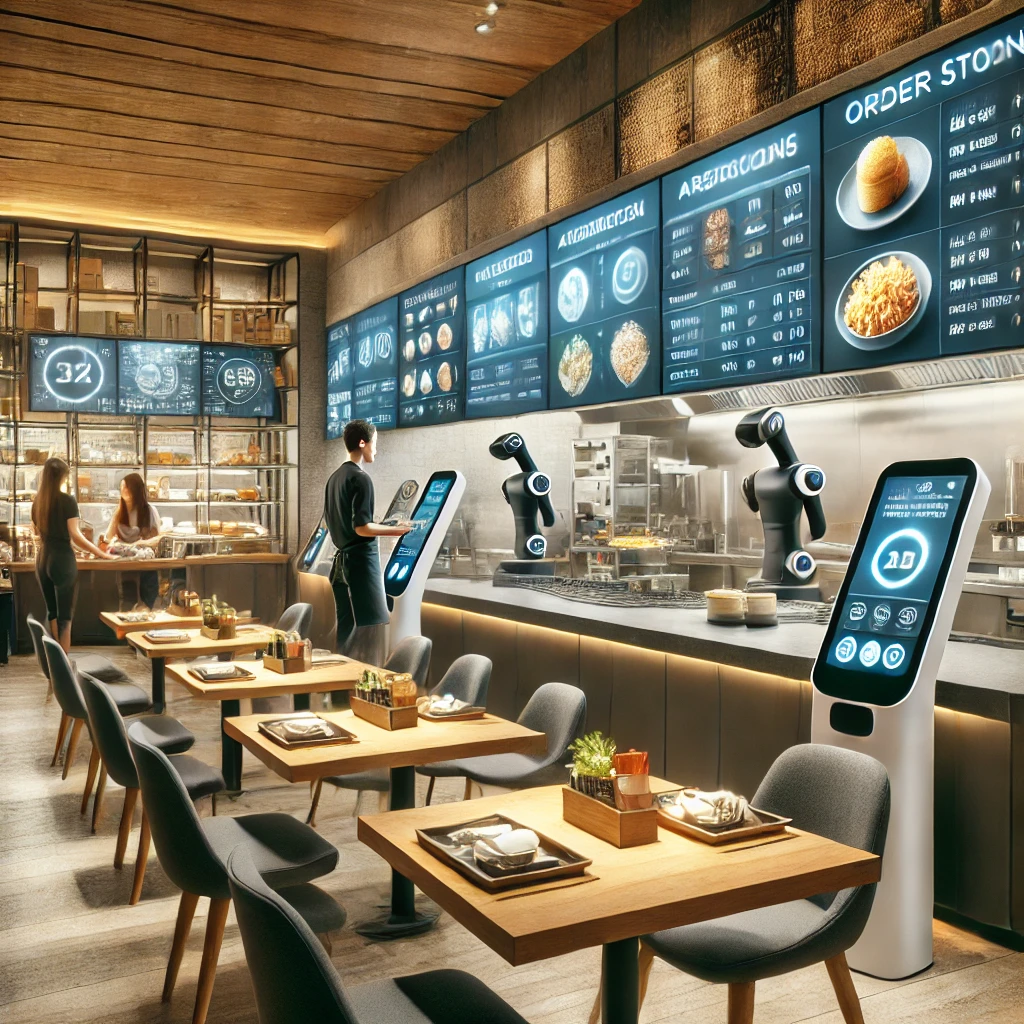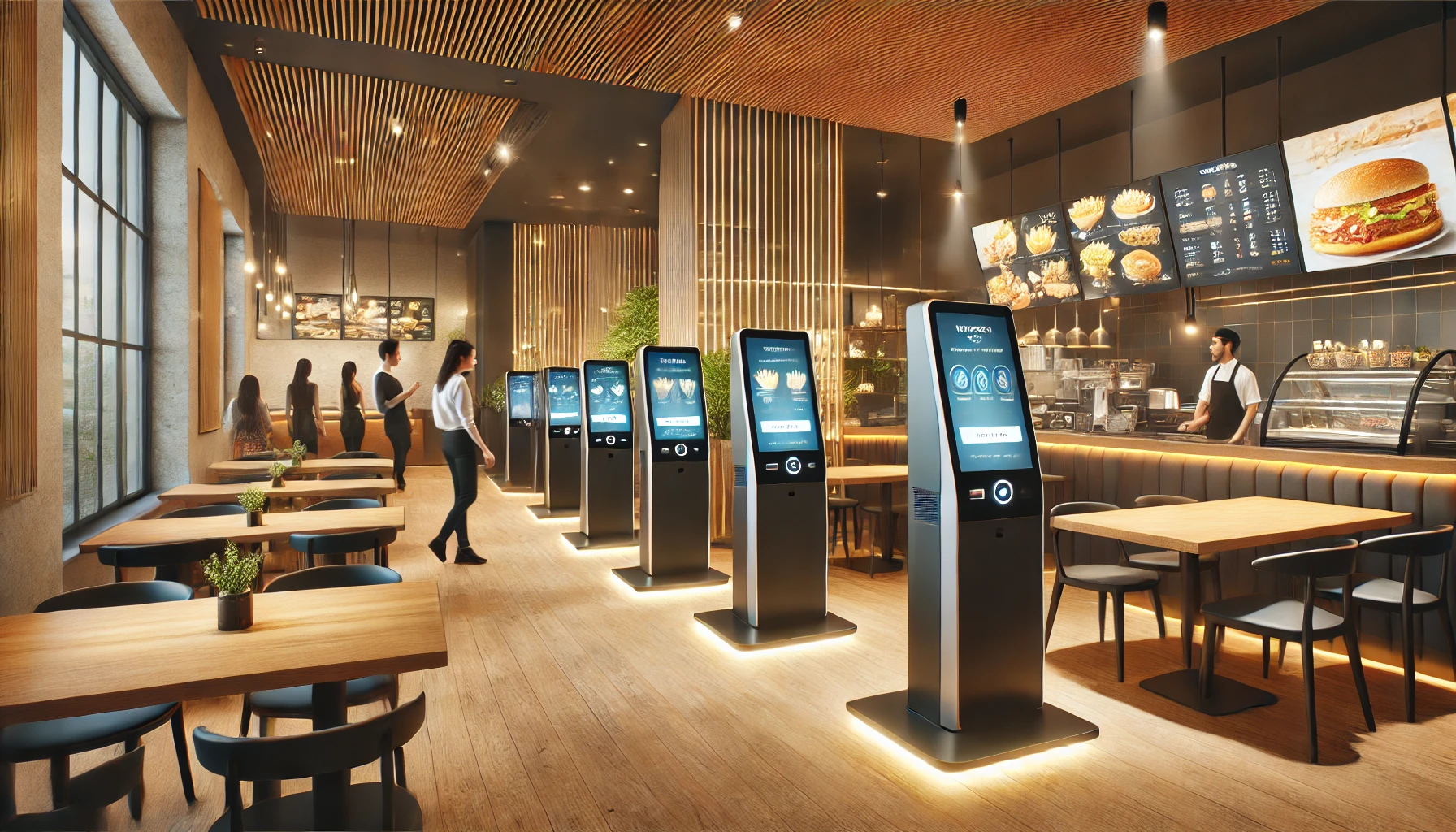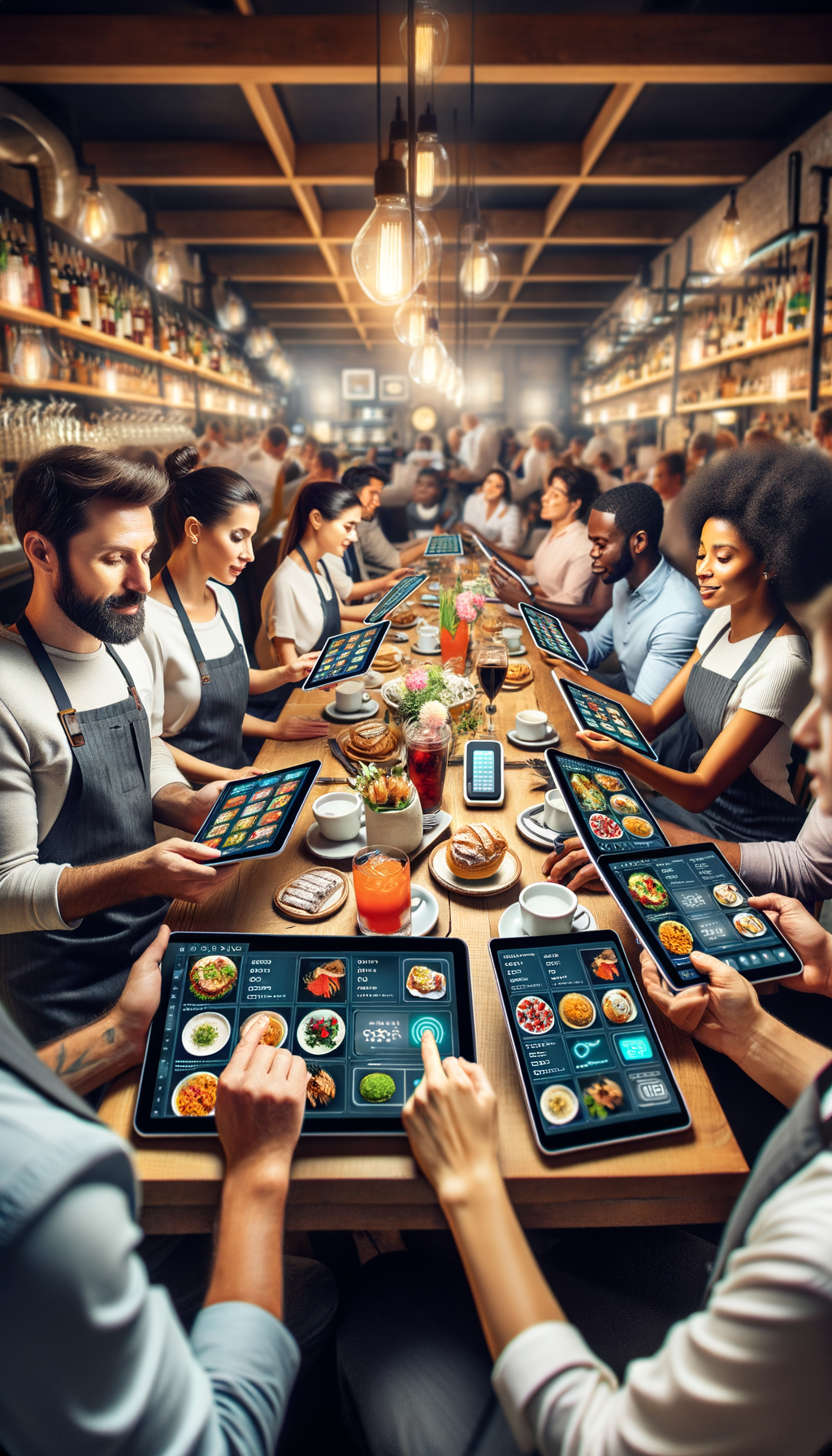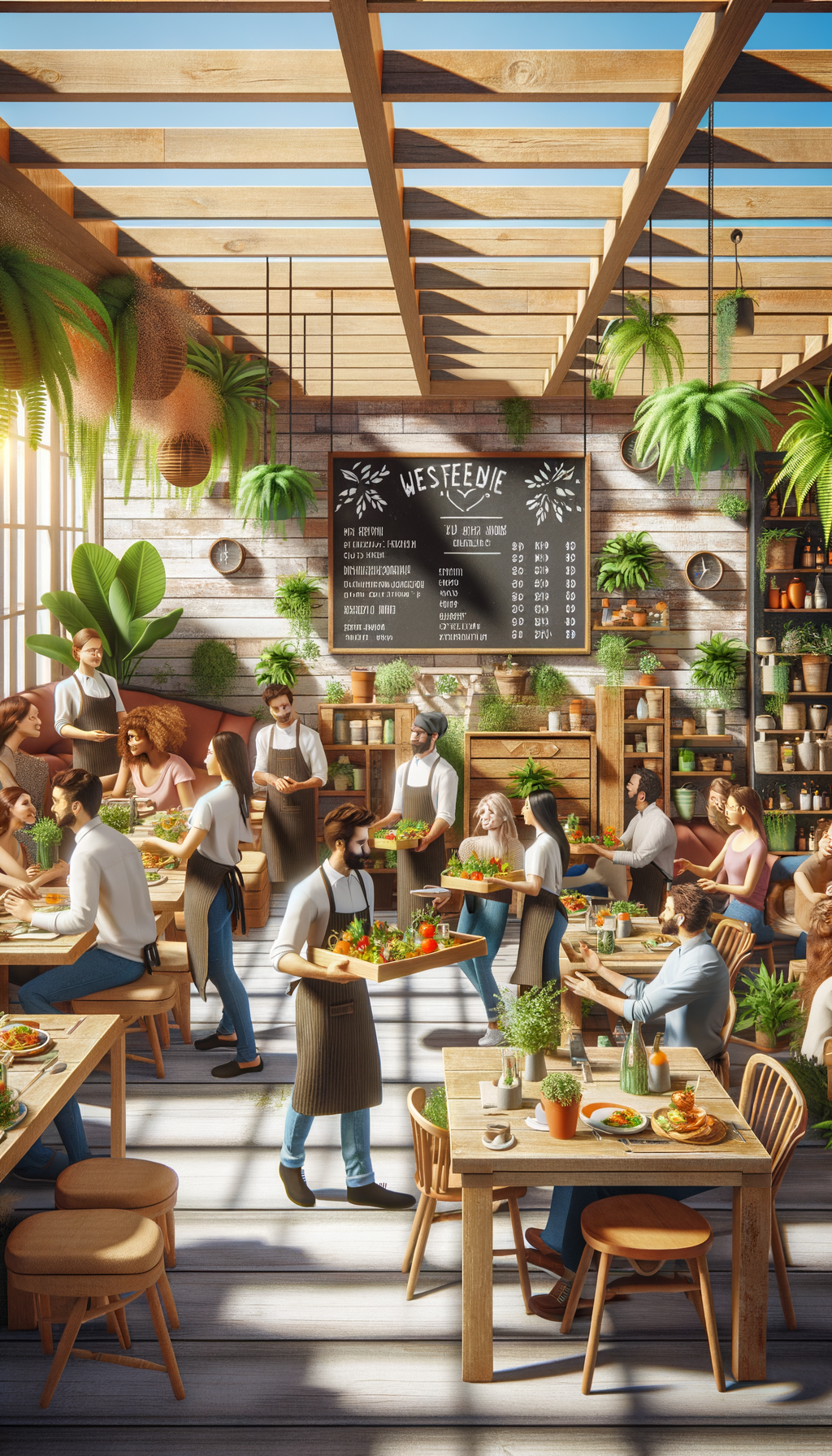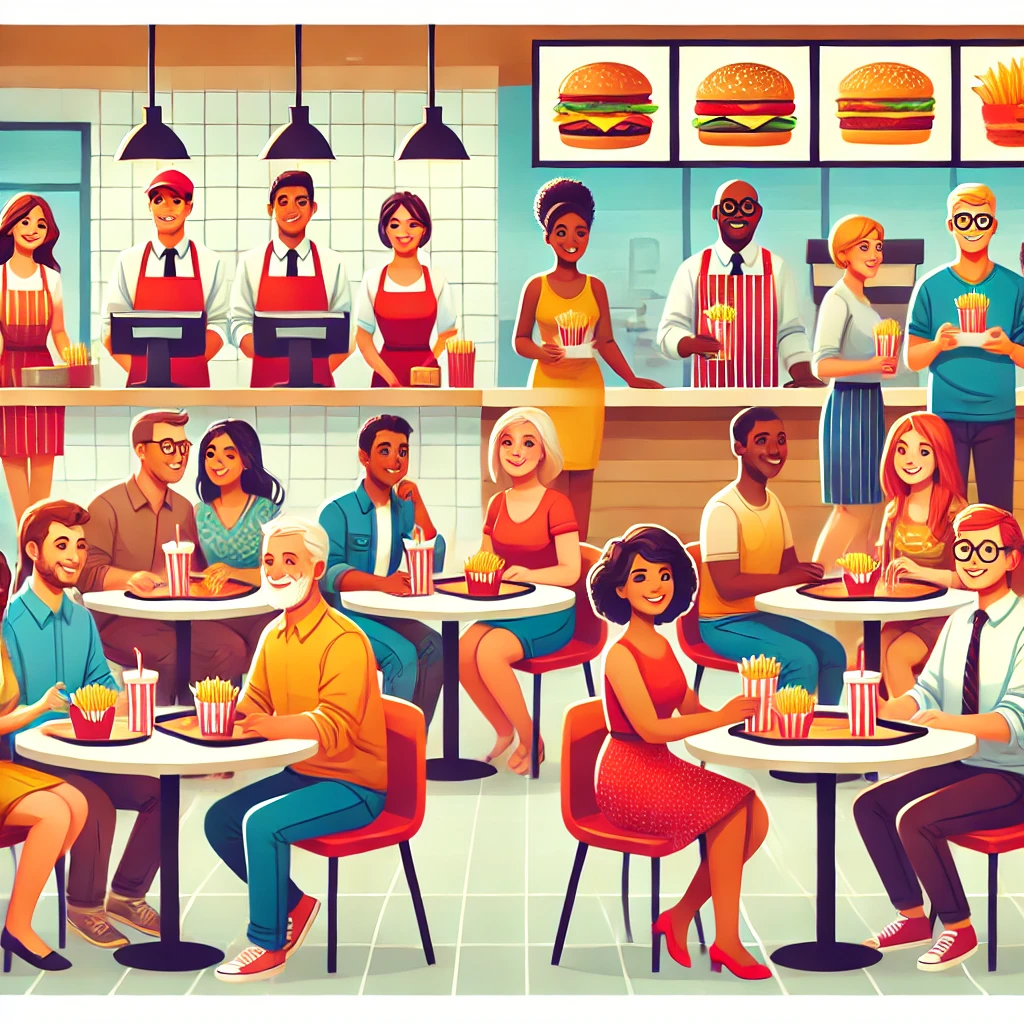Mastering Email Marketing: Your Guide to Success
Adapting to Change: Restaurant Strategies for Success
How to Use Guest Feedback to Grow Your Restaurant: Strategies to Boost Reviews, Retention & Revenue
Opening a New Restaurant: Tips for Success
Navigating QSR Strategies: From Discounts to Loyalty in 2024
Navigating the Future of Food & Beverage Innovation
Driving Growth and Profitability Through Data Insights
Harnessing Data for Business Growth and Profitability
Introduction
In today’s competitive business landscape, leveraging data has become imperative for driving growth and profitability. Organizations are now tasked with collecting, analyzing, and interpreting vast amounts of data to make informed decisions. This section will explore how businesses can harness data to uncover opportunities for growth and enhance overall profitability.
Data analytics allows companies to identify trends, customer preferences, and market dynamics. By utilizing data-driven insights, organizations can craft targeted marketing campaigns that resonate with their audience. Furthermore, understanding consumer behavior through data can lead to improved product development and service delivery, ultimately translating to increased sales.
Additionally, businesses that embrace data-centric approaches often see enhanced operational efficiency. By analyzing workflow processes, companies can identify bottlenecks and implement solutions to streamline operations. This proactive approach not only boosts productivity but also contributes to cost savings, further bolstering profitability.
Analyzing Key Performance Indicators Effectively
To drive growth and profitability, businesses must focus on the right Key Performance Indicators (KPIs). KPIs serve as measurable values that demonstrate how effectively a company is achieving its key business objectives. This section will delve into the importance of selecting and analyzing relevant KPIs tailored to specific business goals.
Identifying the right KPIs involves aligning them with strategic objectives and ensuring they provide insights into business performance. For example, sales growth rate, customer acquisition cost, and net profit margin are essential KPIs that can help businesses gauge their market position. Regularly analyzing these KPIs enables organizations to make data-informed decisions that can significantly impact their growth trajectory.
Moreover, utilizing advanced analytics tools can help organizations visualize KPIs in real-time, facilitating quicker decision-making. By staying attuned to their KPI metrics, businesses can respond swiftly to market changes, optimize their operations, and ultimately drive profitability.
Implementing Data-Driven Strategies in Business
Once businesses have gathered and analyzed data, the next step is to implement data-driven strategies. This section will discuss how organizations can effectively incorporate data insights into their decision-making processes and operational strategies.
A data-driven culture begins with leadership that prioritizes data literacy across all levels of the organization. Training employees to interpret and use data effectively fosters a collaborative environment where insights are valued in strategic discussions. For instance, sales teams can utilize data analytics to refine their techniques, resulting in higher conversion rates and customer satisfaction.
Furthermore, adopting technology that facilitates data integration across departments can enhance collaboration. For example, a customer relationship management (CRM) system that integrates sales, marketing, and customer service data allows for a comprehensive view of customer interactions, enabling businesses to tailor their approaches accordingly.
Measuring Success and Adapting to Changes
Conclusion
To ensure sustained growth and profitability, businesses must continuously measure their success and adapt to changes in the market. This section will highlight the significance of ongoing evaluation and adjustment of data-driven strategies.
Regular assessment of the effectiveness of implemented strategies allows organizations to pivot quickly in response to market fluctuations. By conducting periodic reviews of their KPIs and overall performance, businesses can identify areas for improvement and optimize their operations for better results.
Additionally, staying informed about emerging trends and technologies in data analytics ensures that organizations remain competitive. By fostering a culture of adaptability and continuous improvement, businesses can not only achieve their growth objectives but also sustain profitability in the long run.
How to Elevate Restaurant Profits and Modernization Strategies
Embracing Technology: The Key to Modernization in Restaurants
Introduction
In today’s fast-paced restaurant industry, integrating technology is essential to remain competitive. From digital ordering systems to state-of-the-art kitchen equipment, embracing technology allows restaurants to streamline operations, enhance customer experience, and ultimately boost profits.
Restaurants can utilize point-of-sale (POS) systems that provide valuable insights into sales trends and inventory management. Moreover, online reservation systems and mobile apps enable customers to engage with restaurants more easily, fostering loyalty and repeated visits. By investing in technology, restaurants can better cater to modern consumer preferences and operational demands.
Moreover, adopting kitchen automation technology can optimize preparation times and reduce food waste. This not only leads to cost savings but also improves service speed, allowing restaurants to serve more customers efficiently. In essence, the investment in technology pays off in both immediate and long-term profitability.
Innovative Menu Design: Enhancing Customer Experience and Profits
The menu is the heart of a restaurant, and its design plays a crucial role in driving sales. A well-curated menu that highlights popular dishes and seasonal ingredients can engage customers and encourage them to try new offerings.
To modernize the menu, restaurants should consider incorporating health-conscious options and trending food items that cater to current consumer preferences. Additionally, utilizing descriptive language and visuals can enhance the presentation of menu items, making them more appealing.
Incorporating customer feedback into menu design can also drive profitability. By analyzing which dishes are popular and which ones aren’t, restaurant owners can make informed decisions to adjust their offerings, ensuring they maximize sales and minimize waste.
Streamlined Operations: Optimizing Efficiency for Greater Gains
Operational efficiency is critical in the restaurant business, where every second counts. Streamlining processes, from the kitchen to the front of the house, can significantly impact overall profitability.
Implementing a well-organized workflow and training staff on best practices enhances productivity. For example, employing kitchen display systems can help communicate orders clearly and efficiently, reducing errors and wait times.
Moreover, adopting inventory management software allows restaurants to track supplies in real-time, minimizing overordering and waste. By optimizing operations, restaurants can deliver exceptional service and improve their bottom line.
Marketing Strategies: Attracting and Retaining Customers
In a competitive market, effective marketing strategies are necessary for driving new business and retaining existing customers. Establishing a strong online presence through social media and review platforms is crucial for modern restaurants.
Engaging with customers through targeted promotions, loyalty programs, and personalized marketing can enhance customer experiences and encourage repeat visits. Additionally, leveraging user-generated content can help build a community around the brand and foster trust.
A well-executed marketing campaign can significantly impact a restaurant’s visibility and profitability. By understanding the target market and adopting innovative marketing techniques, restaurants can thrive in today’s evolving landscape.
Conclusion
Modernizing a restaurant and boosting profits requires a multifaceted approach that embraces technology, innovative menu design, streamlined operations, and effective marketing strategies. By implementing these strategies, restaurants can enhance customer satisfaction, optimize efficiency, and ultimately achieve lasting success in a competitive industry.
Strategizing Kiosk Implementation in Restaurants Amid Rising Costs
An Introduction to Restaurant Technology Trends
As the restaurant industry faces rising labor costs and changing consumer preferences, technology has become an essential tool for adaptation. Among the various solutions available, self-service kiosks are gaining traction. This article aims to explore how restaurants can benefit from implementing kiosks and whether this technology aligns with their specific operational needs and goals.
The introduction of technology in restaurants isn’t new; however, the urgency to adapt has intensified. The current landscape demands that restaurant owners not only streamline operations but also enhance the dining experience. With labor costs increasing, many establishments are looking for innovative ways to maintain efficiency while also catering to the evolving expectations of customers.
Kiosks offer a way to reduce the burden on staff, allowing for better resource allocation and improved customer interactions. As we delve deeper into the benefits and considerations of kiosk implementation, it’s vital to assess how this technology can fit within the unique context of each restaurant.
Evaluating the Benefits of Self-Service Kiosks
Implementing self-service kiosks in a restaurant can lead to numerous benefits. Firstly, they streamline the ordering process, allowing customers to choose their meals without having to wait for a server. This can significantly reduce wait times, leading to a more efficient service. Additionally, kiosks can display the full menu, including promotions and upsell options, encouraging customers to make choices they may not have considered.
Moreover, kiosks can collect data on customer preferences and ordering patterns, which can be invaluable for tailoring marketing strategies and menu adjustments. This data-driven approach can help restaurants optimize their offerings, thereby enhancing customer satisfaction and potentially increasing sales.
However, it’s crucial to consider the costs associated with installing and maintaining kiosks. While they can reduce labor costs in the long run, the initial investment and ongoing expenses must be weighed against the projected benefits to ensure financial viability.
Assessing the Impact on Customer Experience
Customer experience is a critical factor in the success of any restaurant. While self-service kiosks can enhance efficiency, they may also alter the traditional dining experience. Some customers may appreciate the autonomy and speed that kiosks provide, while others might feel disconnected from the personal touch offered by human service staff.
To ensure that the introduction of kiosks does not detract from the overall experience, restaurants must strike a balance. This could involve ensuring that staff are still available to assist customers who prefer human interaction, thus catering to a wider range of preferences.
Additionally, the design and functionality of the kiosks play a significant role in how customers perceive their experience. Intuitive interfaces, clear visual displays, and efficient processing are essential components that can enhance customer satisfaction.
Making the Right Decision for Your Restaurant
Deciding to implement self-service kiosks is not a one-size-fits-all approach. Restaurant owners must carefully evaluate their unique needs, customer base, and operational goals before making a commitment. Conducting market research and gathering feedback from patrons can provide valuable insights into whether kiosks would be a welcome addition.
It’s also advisable to consider the logistical aspects of kiosk implementation, such as staff training, system integration, and ongoing maintenance. Ensuring that your team is on board and adequately prepared for the transition is crucial for a successful implementation.
In conclusion, while self-service kiosks present an opportunity for operational efficiency and enhanced customer experience, they require thoughtful consideration and strategic planning to ensure they align with the restaurant’s overall goals and customer expectations.
Leading the Culinary Revolution: Restaurants in 2025
Introduction
As the restaurant industry gears up for the changes that 2025 will bring, adaptability becomes the cornerstone of success. With evolving consumer preferences, technological advances, and an increasing focus on sustainability, restaurants must be proactive in their approach. This article delves into the strategies that can help restaurants not only adapt but also lead the charge into the future.
Embracing Technology to Enhance Dining Experiences
In an era dominated by technology, restaurants must leverage smart tools to enrich customer interactions. From digital menus and contactless payment options to advanced reservation systems, embracing technology can streamline operations and enhance customer satisfaction. Moreover, incorporating data analytics can provide valuable insights into consumer behavior, enabling restaurants to tailor their offerings effectively.
Integrating apps that facilitate customer engagement allows diners to interact with the restaurant beyond just ordering food. Features like loyalty programs, personalized recommendations, and feedback systems can significantly enhance the dining experience. As customers become accustomed to convenience in other sectors, restaurants that offer seamless digital experiences will stand out.
Ultimately, the successful integration of technology not only improves operational efficiency but also fosters a stronger connection between the restaurant and its patrons. As we move towards 2025, those who harness technology will likely lead the charge in creating memorable dining experiences.
Sustainable Practices: The Future of Restaurant Operations
Sustainability is no longer just a trend; it has become a necessity for the restaurant industry. Consumers are increasingly drawn to establishments that demonstrate a commitment to environmental stewardship. From sourcing local ingredients to reducing food waste, restaurants can adopt sustainable practices that resonate with eco-conscious diners.
Implementing energy-efficient appliances, reducing single-use plastics, and partnering with local farms can significantly reduce a restaurant’s carbon footprint. Additionally, educating staff about sustainability practices can create a culture of environmental responsibility within the establishment, further enhancing its appeal to consumers.
As we look toward 2025, restaurants prioritizing sustainability will not only attract more customers but also contribute positively to the planet. This alignment with consumer values is essential for long-term success in a competitive market.
Innovative Menus: Catering to Evolving Consumer Preferences
The tastes of consumers are ever-evolving, and restaurants must be agile in their menu offerings to stay relevant. Experimenting with plant-based options, global cuisines, and health-conscious dishes can cater to a diverse clientele. As more diners become aware of dietary restrictions and preferences, adaptability in menu design is crucial for attracting and retaining customers.
Moreover, interactive dining experiences—such as chef’s tables or cooking classes—allow restaurants to create unique offerings that engage diners on a deeper level. Incorporating seasonal ingredients and limited-time specials can generate excitement and encourage repeat visits, as customers are drawn to the novelty of new flavors and experiences.
In 2025, the most successful restaurants will be those that embrace innovation and remain attuned to the changing tastes and demands of their patrons. By doing so, they not only satisfy their customers but also differentiate themselves in a crowded marketplace.
Building Community Connections: The Key to Longevity
As the restaurant landscape evolves, the importance of community cannot be overstated. Building strong relationships with local communities can enhance a restaurant’s reputation and customer loyalty. Hosting events, supporting local charities, and collaborating with nearby businesses can create a sense of belonging and foster community engagement.
Engaging with customers through social media platforms allows restaurants to connect with their audience on a personal level. By sharing stories and showcasing local partnerships, restaurants can cultivate a loyal following that extends beyond the dining experience.
Looking ahead to 2025, those who invest in their community will not only enhance their brand image but also ensure long-term sustainability and success in the industry.
Conclusion
Navigating the changes that 2025 will bring requires restaurants to be innovative and responsive to consumer needs. By embracing technology, prioritizing sustainability, offering diverse menus, and building community connections, restaurants can position themselves as leaders in the culinary world. The future is bright for those willing to adapt and evolve.
Exploring the Top Restaurant Trends Set to Dominate 2025
Embracing Sustainability in Menu Choices
Introduction
As we look ahead to 2025, sustainability is poised to take center stage in the restaurant industry. With consumers becoming increasingly aware of the environmental impact of their dining choices, restaurants are adopting sustainable practices in their menu offerings. This trend not only appeals to eco-conscious diners but also helps establishments build a positive brand image.
Restaurants are now prioritizing locally sourced ingredients, reducing food waste, and offering dishes that emphasize seasonal produce. This shift not only supports local economies but also enhances the freshness and flavor of the food served. Sustainable seafood and ethical meat sourcing are additional focal points as establishments aim to promote responsible consumption.
Moreover, transparency in sourcing practices is becoming crucial. Diners are more likely to support restaurants that provide clear information about where their food comes from. By embracing sustainability, restaurants can foster loyalty among customers who value environmental stewardship, paving the way for long-term success.
The Rise of Plant-Based Dining Experiences
The future of dining is increasingly leaning towards plant-based options, with a forecasted explosion of vegan and vegetarian menu items. In 2025, we can expect restaurants to dedicate more space to plant-based dishes that are creative, flavorful, and satisfying. This shift is not only a response to dietary preferences but also an acknowledgment of the health benefits associated with plant-based diets.
Innovative chefs will be challenged to craft dishes that appeal to all palates, including those of meat lovers. By incorporating ingredients like legumes, grains, nuts, and vegetables into exciting recipes, restaurants can entice a broader clientele. This trend will also lead to the introduction of more plant-based alternatives that mimic traditional meat products, making it easier for diners to make healthier choices without sacrificing taste.
As the demand for plant-based meals continues to soar, restaurants that embrace this trend are likely to see an increase in customer traffic and satisfaction. The key to success lies in creativity, ensuring that these dishes are not only nutritious but also visually appealing and delicious.
Technology Transforming Restaurant Operations
In 2025, technology will play an integral role in transforming how restaurants operate. From mobile ordering and delivery apps to AI-powered chatbots, technological advancements will streamline operations and enhance customer experiences. The adoption of these innovations will allow restaurants to cater to the growing demand for convenience and efficiency in dining.
Dynamic pricing models and personalized marketing strategies driven by data analytics will become essential tools for restaurants. By harnessing customer data, establishments can tailor their offerings to meet individual preferences, ultimately increasing customer satisfaction. Additionally, technology will facilitate inventory management and food safety practices, ensuring that restaurants operate smoothly and efficiently.
Moreover, the rise of contactless payment options and online reservations will provide customers with a seamless dining experience. As we move into 2025, those restaurants that effectively integrate technology into their operations will stand out in a competitive marketplace, attracting tech-savvy diners and enhancing their bottom line.
Personalized Dining: Catering to Customer Preferences
Conclusion
The restaurant industry is entering an era where personalized dining experiences will become the norm rather than the exception. In 2025, restaurants will increasingly focus on understanding their customers’ preferences, leveraging data to offer tailored experiences that resonate with individual diners.
With the help of AI and machine learning, establishments will be able to anticipate what customers want before they even step through the door. From personalized menu recommendations to unique ambiance settings, the dining experience will be customized to suit the preferences of each guest.
This focus on personalization will not only enhance customer satisfaction but also build lasting loyalty. As restaurants adapt to these changing expectations, those that prioritize personalization will thrive, ensuring they remain relevant in an ever-evolving industry landscape.
Essential Tips for Achieving Franchise Success
The Key to Success: Consistency in Quick-Service Restaurants
Boosting Restaurant Profits: Proven Strategies for Success
Structured Performance Management for Restaurant Success
Building Strong Revenue Management in Quick-Service Restaurants
Boosting Revenue: Strategies for Down Season Profitability
Mastering Restaurant Operations: Best Practices for Catering
Essential Steps for Launching Your Online Food Ordering System
Boosting Restaurant Profits: Happy Hour & Catering Strategies
10 Powerful Ways to Use Digital Signage to Make Your Restaurant Stand Out
Explore the Hottest Restaurant Trends This November 2024!
Boosting Foot Traffic: Proven Strategies for Success
Prepare Your Business: Schedule Your POS Site Survey Today!
Boost Your Restaurant’s Bottom Line: Proven Strategies
Revitalize Your Network: Expert Cleanup Services by Phoenix Geeks
Mastering Digital Menus: Tips for Optimization Success
Boosting Restaurant Profits in the Off-Season: Key Strategies
How Loyalty Programs Boost Revenue and Customer Retention: A Proven Strategy for Business Growth
3 Ways Kitchen Automation Cuts Costs and Boosts Efficiency for Restaurants
Best Practices for Restaurant Franchisors and Franchisees: Build Profitable Partnerships and Ensure Long-Term Success
Prioritizing Employee Work-Life Balance for Better Retention in the Restaurant Industry
How Loyalty Programs Drive Customer Retention in Restaurants
10 Proven Tactics to Build a Loyal and Loving Guest Following for Your Restaurant
Boost Your Restaurant’s Success: How to Diversify Your Menu for a Competitive Edge
Professional Cat5 and Cat6 Cabling Installations in Asheville, NC by Phoenix Geeks
Phoenix Geeks specializes in providing high-quality Cat5 and Cat6 cabling installations throughout Asheville, North Carolina. Our expert technicians ensure that every project is tailored to the unique requirements of the location, from small businesses to larger commercial spaces. Whether you’re setting up a new office, restaurant, or upgrading your current infrastructure, our team ensures that your cabling is installed efficiently and professionally, ensuring seamless connectivity and network performance across all devices.
In Asheville, businesses thrive on reliable communication and data transfer, which makes a solid cabling infrastructure crucial. Phoenix Geeks understands this importance, offering comprehensive services that extend beyond cabling, such as network configuration, troubleshooting, and ongoing maintenance. Our deep experience with both Cat5 and Cat6 cables ensures we recommend the best option for your business needs, whether you’re looking for basic data transfer capabilities or planning for future bandwidth demands. Asheville business owners trust Phoenix Geeks to provide cabling solutions that support long-term growth and scalability.
As a company deeply rooted in IT, Phoenix Geeks’ expertise goes beyond just the technical installation. We understand how vital it is to have a properly installed network that works from day one. With our experience serving restaurants and businesses in Asheville, we take pride in our detail-oriented approach. From planning the cabling layout to ensuring minimal disruption to your daily operations, Phoenix Geeks guarantees a smooth installation process that leaves you ready to tackle your business goals.
Boost Your Restaurant’s Revenue with Toast’s Online Ordering Menu Item Upsell Feature
Maximizing Restaurant Profits: Proven Strategies for Success
How to Grow Your Restaurant’s Consumer Base: Proven Strategies for Success
Why Phoenix Geeks is Your Best Choice for Toast POS Cabling Installation
Best Uses of Time to Maximize Efficiency and Profitability in Restaurant Management
Top-Quality Cat5 and Cat6 Cabling Installations in Chandler, Arizona by Phoenix Geeks
Top 10 Restaurant Tech Trends Revolutionizing Dining in 2024
Expert Toast Tab POS Installations and Support by Phoenix Geeks in Asheville, NC
Phoenix Geeks has been a trusted partner for businesses in Asheville, NC, providing top-tier Toast Tab POS installation, paid support, and go-live services. Since before the pandemic, our experienced techs have been at the forefront of Toast system rollouts, supporting high-profile clients such as Jamba. By seamlessly integrating POS systems tailored to the specific needs of restaurants, we ensure that Asheville’s eateries can operate efficiently from day one. Our in-depth understanding of the local market allows us to provide unparalleled service that helps Asheville businesses thrive.
When it comes to technology installations, who you choose matters, and that’s where Phoenix Geeks stands out. We’re not just experts in Toast Tab POS installations; we’re an all-encompassing IT solution provider for Asheville. Our team is equipped to handle every aspect of your restaurant’s technology infrastructure, including networking, phone systems, and network management, along with expertly laid cabling. With our holistic approach, Asheville clients receive cohesive solutions that streamline operations and minimize downtime, ensuring their technology works as hard as they do.
What sets Phoenix Geeks apart is our deep connection to the restaurant industry. Our founder, having owned two restaurants, understands firsthand the demands of restaurant management. This background drives our passion for providing top-quality service to Asheville’s culinary scene. We recognize that quick, knowledgeable responses to technical questions are crucial, especially during installations or when issues arise. This expertise allows us to provide fast, reliable solutions, making Phoenix Geeks the best choice for Asheville restaurants seeking a trusted IT partner.




